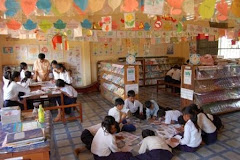
At the OCCWW (Oregon Coast Children's Writer's Workshop,) each author had the opportunity to submit the first 5 pages of one of their current manuscripts to be read and critiqued by each of the 9 instructors. The instructors were 6 well-published authors, 2 children's/YA editors, and 1 agent. This opportunity, alone, made the whole conference worth the price!
Out of curiosity I submitted the first five pages of a novel that's been stewing in my mind for over a year. It's a YA tale of two teen girls who find themselves separately homeless on the city streets of Europe, in winter. It covers the very different hard choices they make in order to survive.
It's a dark, issue-laden YA story.
And yes, unlike my other novels, there's a curse word on the first page! I wasn't sure if that was a good idea or not, so I submitted it to the OCCWW for review.
I chose this manuscript to submit because I wanted to know whether this type of darker, issues-laden writing still has a place in the current YA market.
Would the editors, the agent, and the more experienced writers at the OCCWW
consider such a book too hard core for the current children's/YA market?
Would it be a downer?
Are there readers out there who would seek it?
Would it be marketable if I finish it?
Would it get published? Would it sell?
The answer I got? Yes.
Yes. It's marketable.
Dark YA is still hot with teens today.
Publishers are still looking for this type of book -- if it's well written, they said.
And YES, novels about real-life struggles and issues have a following among teens
-- certain teens that is, but not all.
What I was told agreed with what I already believed. Dark, issue-laden novels are not as mainstream as the gossip-girl style of books, or the darkish fantasies like Twilight.
But there are still teens who look for them.
Both editors at the conference said they would have read more, beyond the first 5 pages. I was elated. Hooray! (Now I guess I'll have to write page six and so on... : )).
------------------------------------------------------------------
One bit of very wise advice that I got from one of the editors was something to the
effect of " always keep some things lite in your dark YA."
The editor indicated that stories like this one, about difficult issues like poverty, war, violence,
drug use, homelessness, death/dying, divorce, mental health, or medical issues can
be overwhelmingly sad if there isn't something upbeat in your story too.
Real life has both sadness and happiness in it. Realistic fiction should reflect real life.
Therefore, she suggested that the best way -- in life, and in fiction -- to get through the darkness, is to laugh or have some sort of positive experience from time to time.
She said it's important to make sure there is humor or something upbeat in all books of dark fiction. That makes sense to me. Even if it's irony or sarcasm, humor lightens the mood.
Just like with life, in fiction things can't be terrible all the time, or none of us will ever get through it.











































